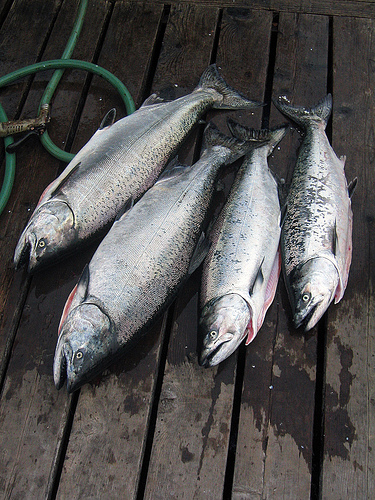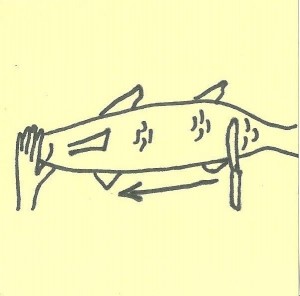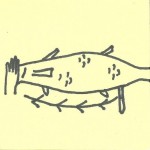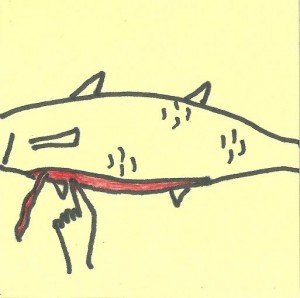Survival School: Fishing for Supper
Summary
 While it’d be great if the apocalypse had a short shelf-life, it probably won’t be the case. The supplies you grab on the way out the door may be the only food you have until forced to hunt/gather for your next meal. Not an encouraging prospect considering how many people live in the city with little to no access to the Great Outdoors, where they can sharpen their survival skills before putting them to use on the run from the undead. It’s okay. We’ve got your back.
While it’d be great if the apocalypse had a short shelf-life, it probably won’t be the case. The supplies you grab on the way out the door may be the only food you have until forced to hunt/gather for your next meal. Not an encouraging prospect considering how many people live in the city with little to no access to the Great Outdoors, where they can sharpen their survival skills before putting them to use on the run from the undead. It’s okay. We’ve got your back.
This week’s lesson elaborates on a quick how-to guide Amy, a ZSC Sergeant at Arms, included in her delicious Campfire Trout recipe many moons ago.
Supplies:
- A clean, flat surface to work on
- Newspaper (if you can find it)
- Bucket/cooler with cold water to store the fish until time to clean them
- 2 clean containers for the scaled/prepped fish
- Small container for fish innards
- Sharp knife
- Butter knife or fish scaler
- Plenty of cold purified water to wash the fish
How to:
- Keep the fish in cold water until you’re ready to clean them. Fish spoils rapidly after death. Plan to catch, clean, and cook the fish within a two-hour span or less.
- Prepare your cleaning table. Cover the table with newspaper. Set out everything you’ll need. Nothing is worse than getting fish goo all over your hands, then stopping to fetch the knife you forgot in the bottom of your go bag. Cleaning fish is messy. It’s best you don’t do this in camp, lest the residual mess you can’t clean attract wildlife.
- Scaling the fish.
- Grab your first fish and plop it on the cleaning table—keep the rest in cold water until it’s their turn. Hold the fish down by its head. Starting at the tail, use the butter knife or fish scaler to scrape the scales, working toward the head. Short, medium pressure strokes work best. Don’t press too hard, you’ll damage the flesh. Make sure to remove all the scales around the fins and gills.
- Rinse the fish. Make sure all the loose scales are rinsed off. If you have more fish to work on, store the little fellow in clean water.
- The First Cut:
- Now is not the moment to be squeamish. Set the scaled fish down on the prep table. Hold it down firmly by the head, as before. Using the sharp knife, insert the blade tip into the fish’s anus—that’s down near the tail on the underside of the fish. Note: If you have a larger fish—one larger than a frying pan’s diameter—flip it onto its back for easier cutting.
- Draw the knife along the fish’s belly, going from the tail toward the gills. Put the knife aside.
- Now for the messy part.
- Stick your fingers into the fish and scoop out everything inside. Dump the innards into the trash bowl. Note: Do not dispose of the innards near camp. All camp garbage should be stored elsewhere so it doesn’t attract wildlife.
- Rinse the fish. Make sure to give it a good wash inside to remove anything which could potentially make you sick.
- Off with its head! Some people are opposed to eating food that looks at them. If you want to, cut the head off behind the gills and give it another quick rinse.
- Store the clean fish in cold, clean water until you’re ready to cook it. We suggest using Commander in Chief Juliette Terzieff’s quick and easy recipe.



